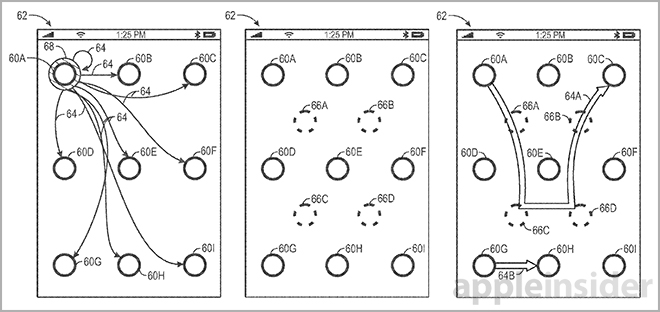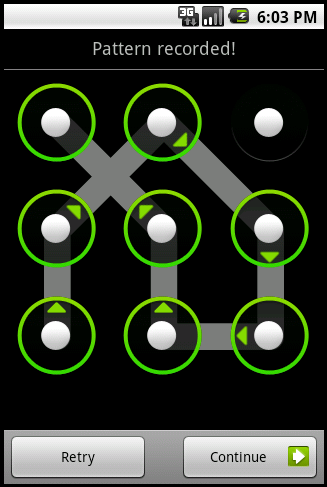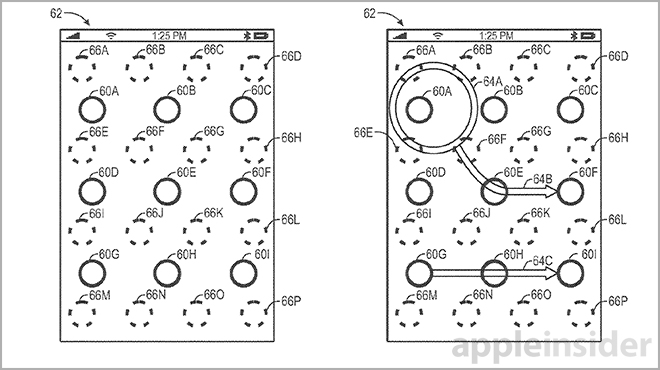Affiliate links on Android Authority may earn us a commission. Learn more.
Apple is trying to patent a gesture unlock method that’s dangerously close to Android

For the last couple of weeks, in a courtroom in California, Apple has been trying to convince jurors to award it hundreds of millions of dollars as compensation for Samsung’s alleged infringement of its infamous slide-to-unlock patent.
Meanwhile, the Cupertino-based company is applying for two patents on a screen unlocking method which channels a feature that Android had for years.

To be clear, Apple is not trying to patent the specific gesture unlock system we know from Android. It probably couldn’t, as the prior art is undeniable. Rather than that, the company is proposing an evolution of the idea of drawing a specific pattern across a matrix of elements to unlock a mobile device.
Apple’s idea is to make the matrix of dots configurable and to add invisible dots, that the user would need to be aware of in order to enter the correct pattern. The applications also mention variations in the pattern entry, such as different speeds and pauses, that would add an element of complexity, making it much harder for an unauthorized user to guess the pattern. The system also includes a pattern strength meter, similar to the password strength meters used on many sites.

To be granted a patent, an invention must be novel and non-trivial. Apple’s applications may meet these conditions, at least at first glance. The US Patent and Trademark Office will decide if indeed these core conditions are satisfied.
Apple has clearly channeled the Android implementation of pattern unlock, and arguably enhanced it. There’s nothing wrong with that, as there’s nothing wrong with protecting one’s ideas with patents.
But these patent applications do raise a question – why? It seems unlikely that Apple would adopt pattern unlock for its devices, with Touch ID being well received on the iPhone and rumored to come to the iPads. Adopting the feature would also expose Apple to accusations of copying and, potentially, legal action from Google, who holds several patents on pattern unlock.
So if Apple won’t (or can’t) use pattern unlock on its devices, why would it try to patent this evolution of the idea? Probably just to make it unavailable to competitors. If Apple is granted the patents it seeks, Google would have a harder time enhancing pattern unlock to make it more secure or more useful for Android users.
If that’s the case, we’re again witnessing one of the uglier sides of the tech industry. Of course, it’s not just Apple that’s resorting to preventive patenting, as the entire industry is furiously seeking legal protection even for the most insignificant features. The problem is users are hardly winning anything from this state of affairs.